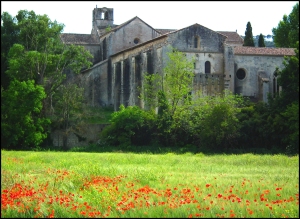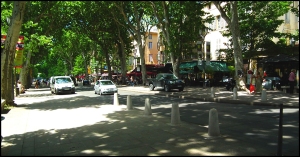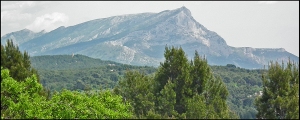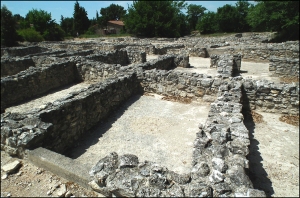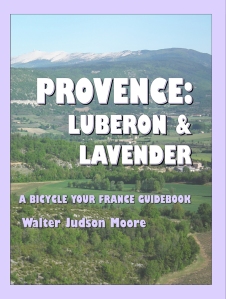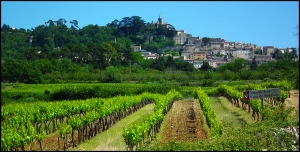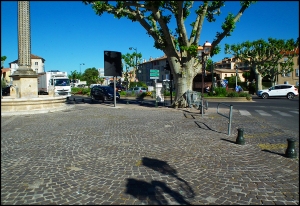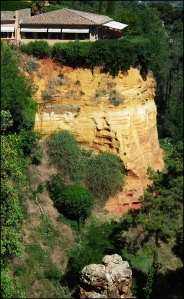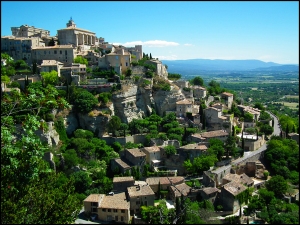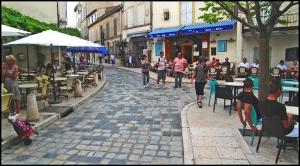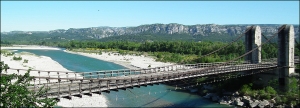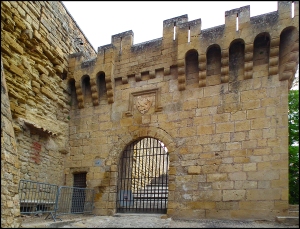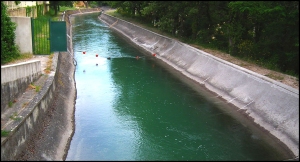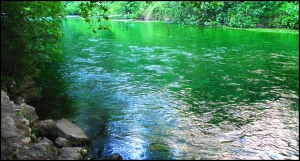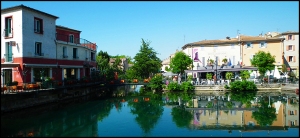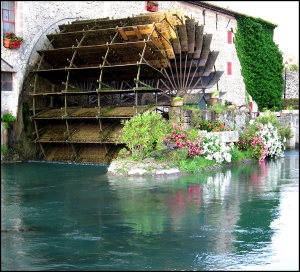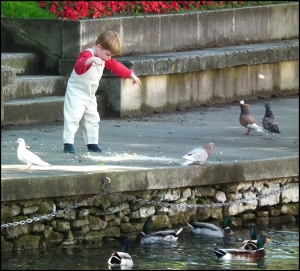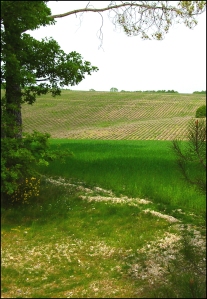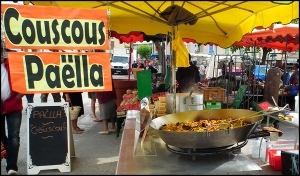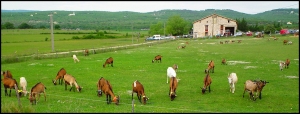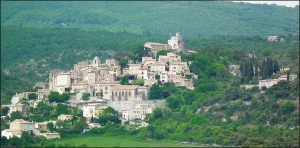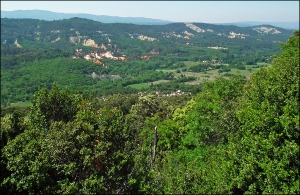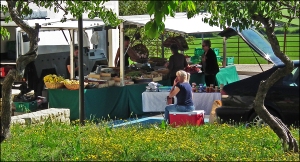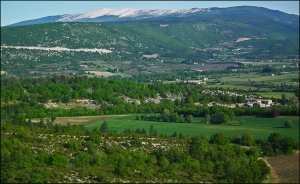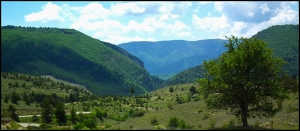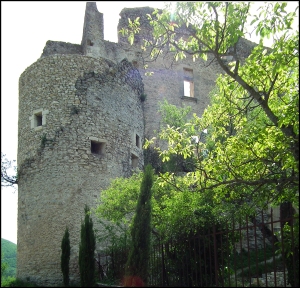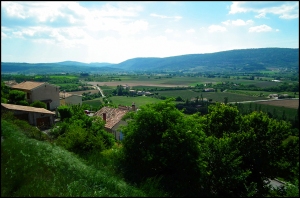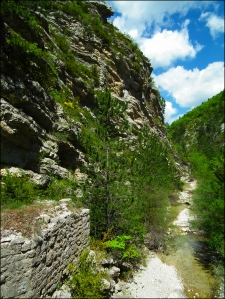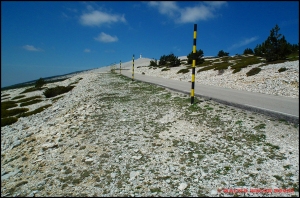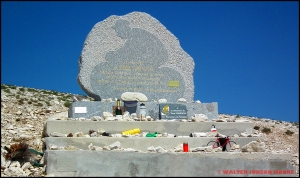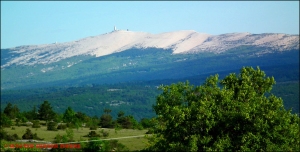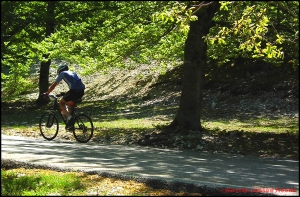Abbaye de Silvacane
Founded in 1144 by monks of the Cistercian order, the site for Silvacane was located next to the Durance Rivière in an area overgrown with reeds. A cave-dwelling group known as the Pontistes hermits lived in the high ridges to the south during the eleventh century and maintained the Chapelle of Ste-Anne de Goiron. There is some evidence that they founded Silvacane.
At the end of the twelfth century, two counts endowed the abbey with income property that allowed relative wealth for the monks. In 1289, the envious Benedictine monks of Montmajour Abbey near Arles attacked Silvacane and took the Cistercians hostage. After much negotiation (and probably payment of ransom), the Benedictines released the hostages.
Aix-en-Provence Cours Mirabeau view
After 123 (Before the Common Era) BCE, Romans started settling in the area around what is now the St-Sauveur Cathedral. In honor of Caius Sextus and numerous springs, the outpost named the village Aquae (the waters of) Sextiae. By the end of Roman domination late in the fourth century, the Roman colony levered its resources and spa to a privileged community at the crossroads of Italy, Spain, and on the paths of transhumance between the lowlands and mountains.
Then around 400 (Common Era) CE, the Archdiocese moved into the city. After the demise of the Roman colony in the fifth century, the Visigoths conquered Aix. During the following two centuries, thetown was constantly under attack by the Franks and the Lombards. It was a very unsettled time and many people escaped the town and settled elsewhere.
The Saracens finally captured Aix in 731, and experienced a calmer period as the area prospered. Aix became the capital of the country of Provence, but it remained static after its initial growth. The city did not begin to thrive again until the twelfth century, when it became an artistic hub under the control of Aragorn and Anjou. Provence became part of France in 1487. Louis XII sanctioned the Provence Parliament, which lasted until 1789. Throughout the 17th and 18th centuries, Aix was the administrative seat of Provence. Aix founded its university in 1409.
Cézanne’s Montagne St-Victoire
Born in 1839, this extraordinary painter and native of Aix-en-Provence, Paul Cézanne knew and stood shoulder to shoulder with Zola, Pissaro, Guillaumin, Oiler, Monet and Renoir. He studied at the Aix Municipal Drawing School, and in July 1858, failed the baccalaureate. Finally, on 12 November of 1858 he passed and received his certificate with the level assez bien (good enough). From November 1858 to August 1859, he diligently followed the drawing lessons of the municipal school.
Then in 1859, he entered the Aix Law faculty. From November 1859 to August 1860, Cézanne was still in the Municipal Drawing School, dreaming about becoming a painter.
He gave up law studies in 1861 and went to Paris where he found Zola and met Pissaro in the Swiss Academy; discouraged he returned to Aix and started working in his father’s bank while still studying in the Aix Municipal Drawing School.
He failed the Salon in 1864 and in 1865. And so it goes, but he was persistent; in 1882 he was accepted in the Salon for the only time in his career.
Cézanne bought property in 1901 on Chemin des Lauves (renamed Rue Paul Cézanne) that overlooks Aix to the south. During the following year, he had a studio constructed on les Lauves hill from his own plans.
For the next four years, the studio was the creative home of a new art, and Cézanne referred to himself as the “primitive.”On 22 October 1906, Cézanne died of pleurisy contracted while painting.
This atelier, a wood box at the edge of a bluff, has tall windows for the north light. It was from here, for a short time, he created great art. For those with vision and understanding—with perhaps an occasional and modest perception—these thoughts from Cézanne: “When the color is at its best, the shape looks better too. The contrasts and the resemblances in the colors, here is the secret of the drawing and of the shapes.” Not the tools (a spatula) or the techniques and structures taught in the Municipal Drawing School or the standards demanded by the Salon in Paris mattered. It was color, shape and his vision.
Entremont Oppidum
The narrative of the Entremont Oppidum stretches back to the early Iron Age, about 500 BCE. At that time, this important archeological site was a Celtic sanctuary. Scholars deduce this by the bas-relief céphaliformes (carvings of heroic-figure skulls, sheaves of wheat and snacks) in lintels. Over a period of 400 years, the populations became an agglomeration with the Ligurians, and were known as Salyens by chroniclers in the Greek outpost of Marseille. The population is estimated at 2,000 to 5,000. These Salyens were both and economic confederation and a military league. The Roman Caius Sextus captured the fortification in 123 BCE and controlled the Plain of Aix and the Arc Valley. Teutomalios, the Salyen emperor, abandoned Entremont with their allies and princes, and Sextus had the city destroyed.
The Oppidum is situated on a plateau overlooking the Arc Valley 200 meters below to the south. The first protective walls on the north were erected in about 175 BCE.
The settlement under investigation covers 3½ hectares, and has three-meter wide, unpaved streets. The interior of the town is arranged in 24-meter by 10½-meter blocks. A typical stone housing unit is 5½ meters by 3¼ meters. In August 2007, investigators had excavated 75 units. Researchers have also unearthed olive oil presses and a storage building capable of holding 3,000 liters.
Route map, profile and details of passing interest are in the Aix-en-Provence & Lambesc routeas part of “Provence Luberon & Lavender – a Bicycle Your France guidebook”, May 2011. Dreaming of a cycling vacation/holiday in France? I hope so. Even if you are not planning a trip to France, you may know someone who is, either cycling or motoring. Amazon and iTunes has seven guides of different areas that I crafted.
Provence: Luberon & Lavender: A Bicycle Your France Guidebook – http://www.amazon.com/Provence-Luberon-Lavender-Bicycle-Guidebook/dp/1468096923/
